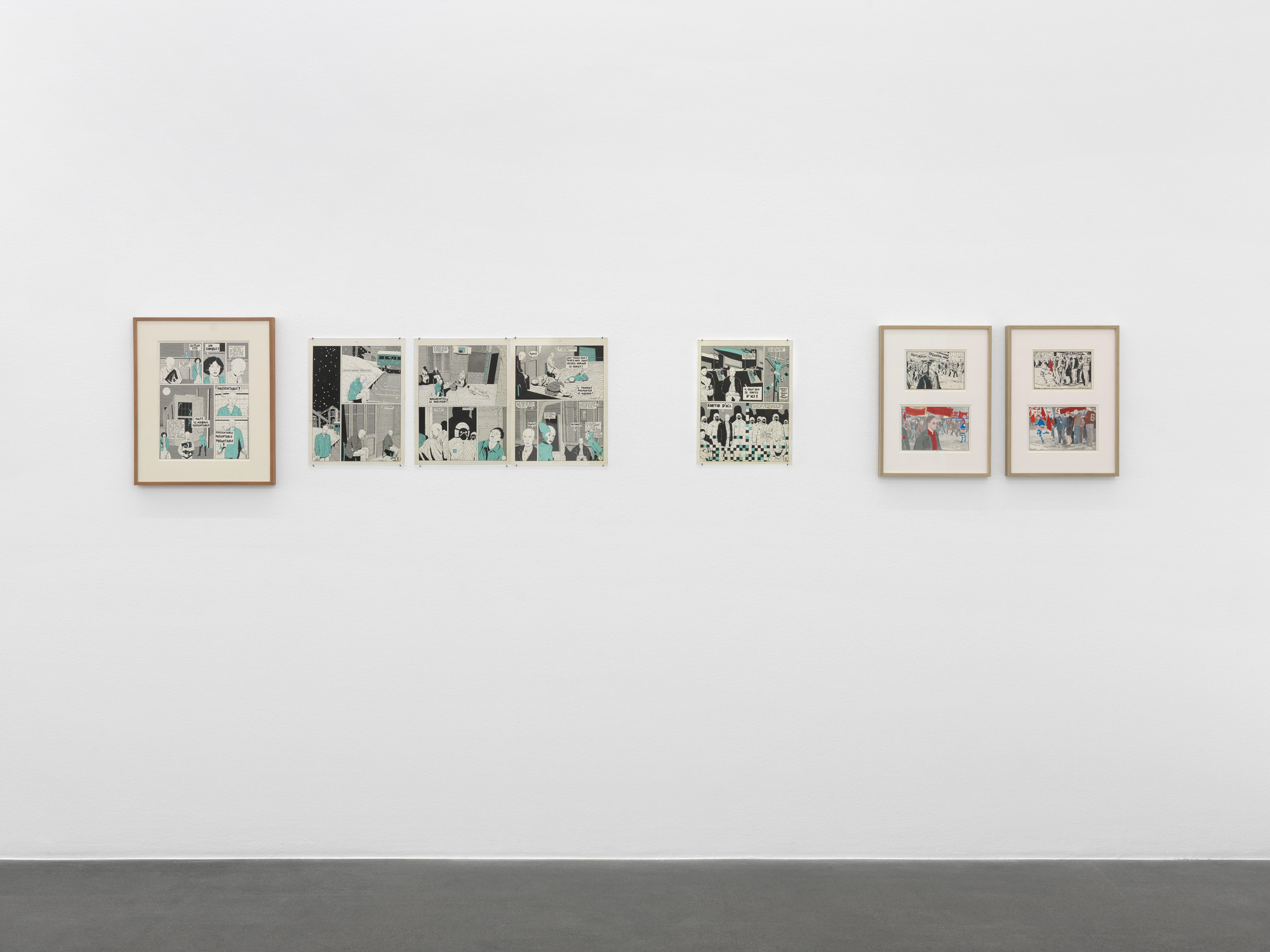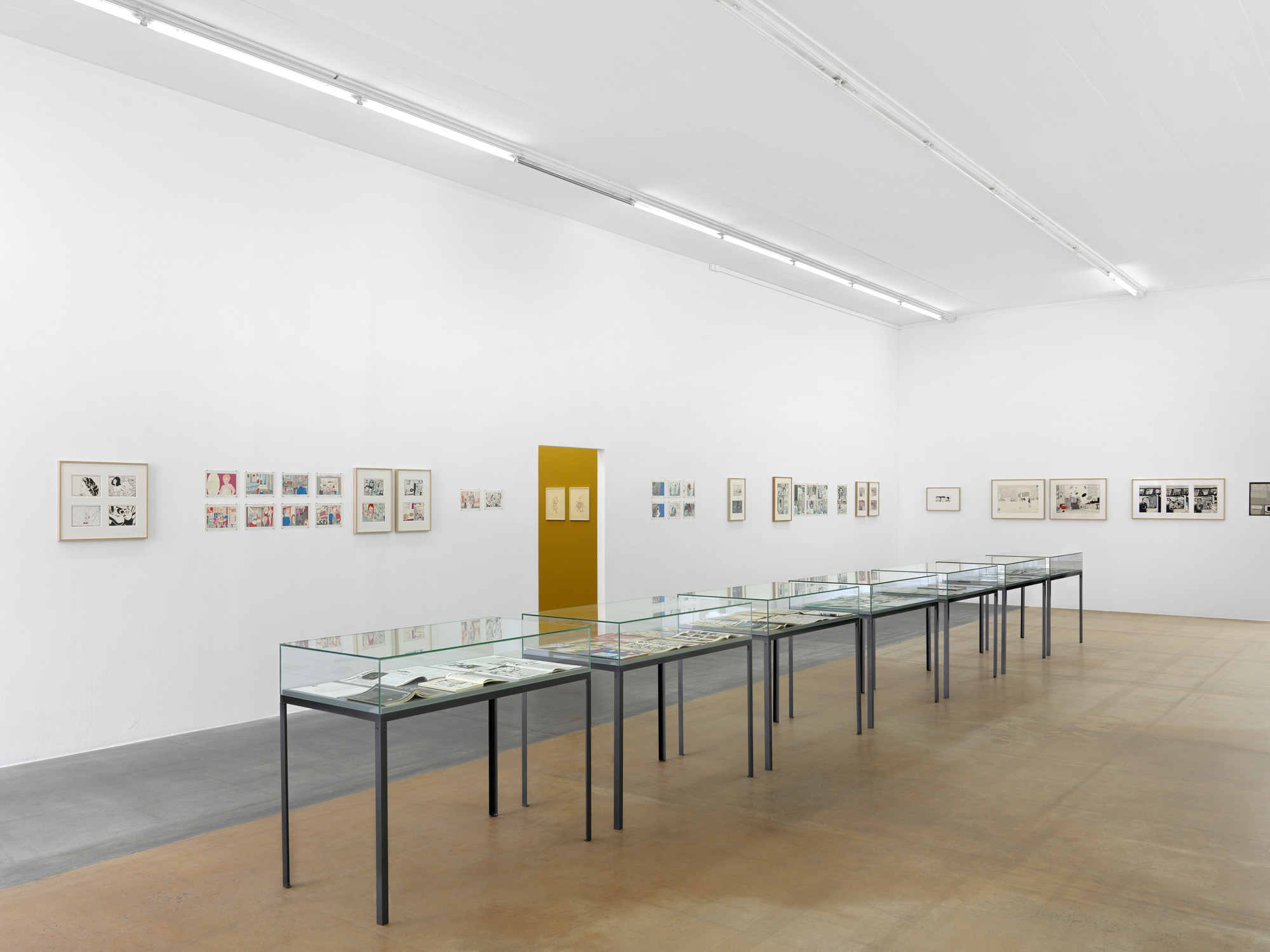Too intelligent, too beautiful, too strong, too Communist? Chantal Montellier has often been viewed with a mix of fear and fascination—a fact that has caused her art to be relegated to the background when it should justifiably be in the spotlight. This exhibition covered the most prolific period of Montellier’s career, showcasing why her comics deserve recognition as some of the most politically significant works of their time.
Between 1978 and 1994—a period that began with her first appearances in Charlie Mensuel, Ah ! Nana and Métal Hurlant and ended with the release of the third book in the Une aventure de Julie Bristol series (published by Dargaud)—Montellier produced a body of work unparalleled in its criticism of the contemporary world. This output came at a time when comics were no longer the preserve of the children’s sections of bookstores and kiosks. With the benefit of hindsight, it is easy to argue that Montellier is one of the most authentically “adult” proponents of the genre to emerge from Europe. Her critique of political economy is elevated to full-throated condemnation of the society of control as well as of consumerism, patriarchy, and state-sanctioned violence.
Montellier’s work juxtaposes the chill of reality with regressive escapism and unhealthy nostalgia. At once realistic and dystopian, her comics teem with images that only moderates would consider extreme. In her fictional world, Paris is haunted by murdered Communards, shopping malls are run as laboratories for closed-door social experiments, men are depicted as crocodiles, computer-assisted eugenics is the norm, stuffed corpses sell second-hand cars, and Big Brother is a bald old man whose face we find likable because of our cultural conditioning. While Montellier portrays the psychiatric institution with the minute attention to detail of a documentary filmmaker, she also depicts it as the flip side of a world in which the most dangerous lunatics are the ones with their hands on the levers of power and the nuclear codes. As for her state-sponsored assassins (the police inspectors), their handsome features belie a bureaucratic propensity for blunder.
- Exhibition curated by Rosa Brux, Vanina Géré and Frédéric Wecker, in collaboration with the Nancy National School of Art and Design (ENSAD Nancy) and the Villa Arson, with the support of the Huberty & Breyne Gallery

